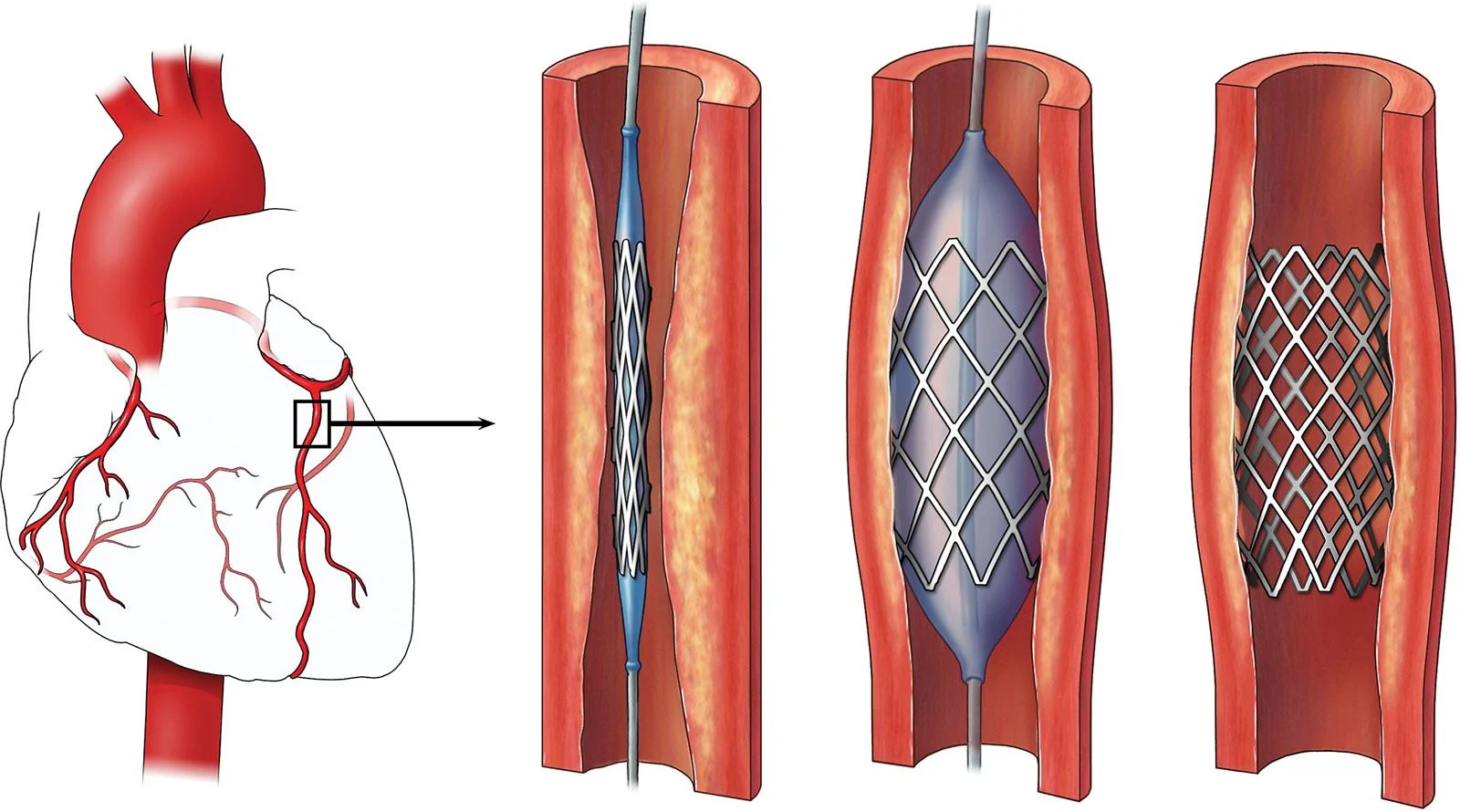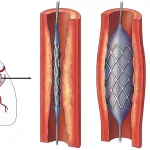Heart disease continues to be one of the leading health concerns in India, and Chennai has emerged as a major hub for world-class cardiac care. Among the many life-saving procedures performed every day, Percutaneous Coronary Intervention (PCI) — also known as coronary angioplasty — stands out as a minimally invasive and highly effective treatment for coronary artery blockages.
This article explores everything you need to know about PCI treatment in Chennai — including procedure details, benefits, recovery, risks, and cost insights — to help you make an informed decision about your heart health.
What is PCI (Percutaneous Coronary Intervention)?
Percutaneous Coronary Intervention (PCI) is a non-surgical procedure used to open narrowed or blocked coronary arteries and restore normal blood flow to the heart muscle. It is performed by interventional cardiologists using a catheter-based approach, which means there is no open-heart surgery involved.
In simple terms, PCI is a lifesaving procedure that can quickly relieve chest pain (angina), improve blood flow, and reduce the risk of heart attack.
When is PCI Recommended?
Your cardiologist may recommend PCI if:
-
You have significant narrowing or blockage in one or more coronary arteries.
-
You experience severe chest pain (angina) not controlled by medications.
-
You have had a heart attack (acute myocardial infarction) where immediate blood flow restoration is needed.
-
You have abnormal stress test or imaging findings suggesting poor heart muscle perfusion.
-
You are not a suitable candidate for open-heart surgery (CABG).
Types of PCI Procedures
PCI has evolved significantly over the years. In Chennai’s advanced cardiac hospitals, several specialized PCI types are available:
1. Standard Angioplasty with Stent
A balloon is inflated inside the artery to widen it, followed by the placement of a drug-eluting stent (DES) to keep it open.
2. Primary PCI in Acute Heart Attack
Performed immediately after a heart attack to restore blood flow and minimize heart muscle damage. This is an emergency procedure done 24×7 in tertiary cardiac centers.
3. Complex PCI
Used for multiple blockages, bifurcation lesions, or chronic total occlusions (CTO) — typically requiring advanced imaging and operator expertise.
4. Left Main PCI
For blockages in the left main coronary artery, one of the most critical regions supplying the heart. This requires high-precision imaging guidance like IVUS (Intravascular Ultrasound) or OCT (Optical Coherence Tomography).
5. Imaging-Guided PCI (OCT/IVUS)
Chennai’s top heart institutes increasingly use these intravascular imaging tools to optimize stent placement and ensure long-term success.
Step-by-Step PCI Procedure
-
Access and Preparation:
A thin catheter is inserted through the wrist (radial artery) or groin (femoral artery). -
Coronary Angiography:
A contrast dye and X-ray imaging identify the exact site and severity of blockages. -
Balloon Angioplasty:
A small balloon is inflated to open the narrowed section of the artery. -
Stent Placement:
A stent (metal mesh tube) is deployed to hold the artery open; most are drug-eluting to prevent re-narrowing. -
Completion:
The balloon and catheter are removed, and blood flow is reassessed. The patient is monitored in a recovery area for several hours.
Benefits of PCI
-
Immediate relief from chest pain and breathlessness
-
Improved heart function and quality of life
-
Short hospital stay (usually 1–2 days)
-
Quick recovery and return to normal activities
-
Lower risk of heart attack and heart failure
-
No major scars or stitches, unlike bypass surgery
Risks and Possible Complications
While PCI is generally safe, potential risks include:
-
Bleeding or bruising at the catheter insertion site
-
Allergic reaction to contrast dye
-
Restenosis (re-narrowing of artery)
-
Blood clots within the stent
-
Rarely, heart attack or arrhythmia during the procedure
However, with modern technology, drug-coated stents, and intravascular imaging, the risk of complications is extremely low, especially in high-volume cardiac centers in Chennai.
Recovery After PCI
Hospital Stay
Most patients are discharged within 24–48 hours after the procedure. You’ll be monitored for heart rhythm, blood pressure, and puncture site healing.
Medications
Doctors prescribe antiplatelet medicines (like aspirin and clopidogrel) to prevent clot formation inside the stent.
Lifestyle Modifications
-
Follow a heart-healthy diet low in saturated fats and salt.
-
Exercise regularly under medical supervision.
-
Quit smoking and limit alcohol consumption.
-
Manage blood pressure, diabetes, and cholesterol effectively.
Follow-Up
A post-procedure follow-up visit is essential within 1–2 weeks to monitor recovery and review medications.
PCI vs. CABG (Bypass Surgery)
| Aspect | PCI (Angioplasty) | CABG (Bypass Surgery) |
|---|---|---|
| Invasiveness | Minimally invasive | Open-heart surgery |
| Hospital Stay | 1–2 days | 5–7 days |
| Recovery Time | 3–5 days | 4–6 weeks |
| Best For | 1–2 artery blockages | Multiple / complex blockages |
| Anesthesia | Local | General |
| Scars | None | Chest incision |
| Repeatability | Can be repeated | Limited repeat procedures |
PCI Procedure Cost in Chennai
The cost of PCI in Chennai can vary depending on:
-
Type of stent used (drug-eluting vs. bare-metal)
-
Number of blockages treated
-
Use of intravascular imaging (OCT/IVUS)
-
Hospital facilities and doctor’s expertise
-
Emergency vs elective procedure
On average, the PCI procedure cost in Chennai ranges from ₹1.6 lakh to ₹3.5 lakh per artery. Complex or imaging-guided PCI can cost slightly higher (up to ₹4.5 lakh).
Many top hospitals in Chennai such as Apollo Hospitals, Fortis Malar, MGM Healthcare, MIOT International, and Kauvery Hospital offer advanced PCI with transparent package pricing and insurance support.
Why Choose Chennai for PCI Treatment?
Chennai has established itself as a premier destination for cardiac care in South India, offering:
-
Experienced interventional cardiologists trained in advanced PCI and imaging-guided techniques
-
24×7 emergency cardiac catheterization labs
-
Latest generation stents and imaging technology (OCT, IVUS, Rotablation)
-
Affordable costs compared to metro cities like Mumbai or Delhi
-
Comprehensive post-angioplasty rehabilitation programs
Whether it’s a simple angioplasty or a complex left main PCI, Chennai’s cardiac centers are equipped to deliver international-standard outcomes.
Frequently Asked Questions (FAQs)
1. Is PCI a permanent cure for heart disease?
PCI relieves blockage and improves blood flow but doesn’t reverse the underlying heart disease. Long-term success depends on controlling risk factors and adopting a heart-healthy lifestyle.
2. How long does a stent last after PCI?
Modern drug-eluting stents can last for many years, often lifelong, if patients adhere to medications and regular check-ups.
3. Is PCI painful?
The procedure is done under local anesthesia. You may feel mild pressure during balloon inflation but no significant pain.
4. When can I resume normal activities after PCI?
Most patients can return to daily activities within 3–5 days, though heavy exercise should be avoided for 1–2 weeks.
5. What’s the success rate of PCI in Chennai?
With experienced cardiologists and modern facilities, PCI success rates in Chennai exceed 95–98%, with very low complication rates.
6. Can PCI be repeated if blockages occur again?
Yes. If restenosis or new blockages appear, PCI can be safely repeated with newer stent technologies.
7. Is PCI covered under health insurance?
Yes, most private and government insurance plans in India cover PCI or angioplasty procedures, including stent cost and hospitalization.
8. What should I eat after PCI?
Adopt a Mediterranean-style diet — rich in fruits, vegetables, fish, whole grains, and olive oil — while avoiding red meat, sweets, and trans fats.




